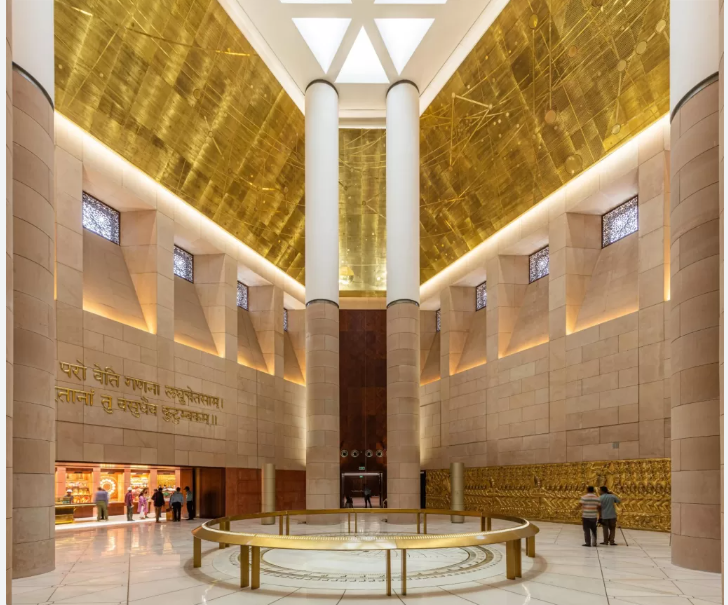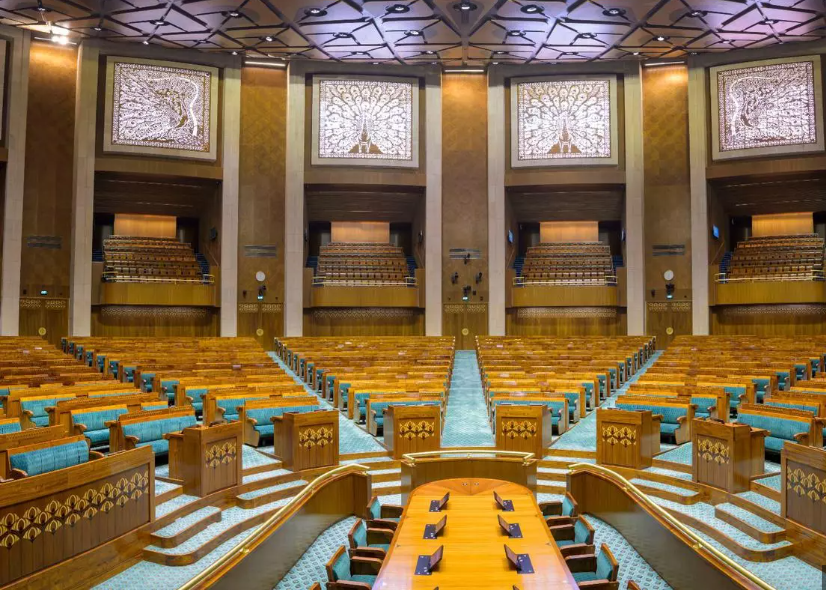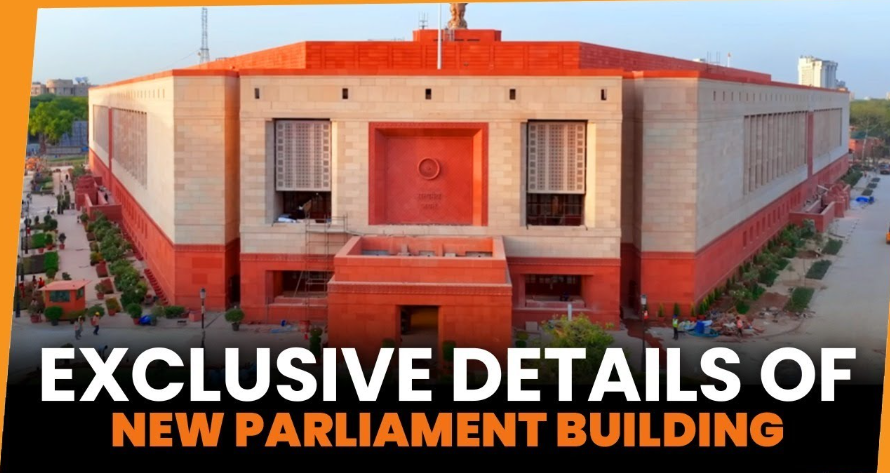Today marks the start of the new Parliament building’s inauguration in India. Upon arriving at the new location, Prime Minister Narendra Modi and Speaker of the Lok Sabha Om Birla took part in a customary puja and havan ceremony. The historic “Sengol” has been positioned by PM Modi next to the Speaker’s chair in the Lok Sabha.
The ceremony’s morning portion will end at approximately 9:30 a.m., and the ceremony’s afternoon portion is scheduled to begin at noon. During this phase, all dignitaries, including PM Modi, will gather in the Lok Sabha chamber to sing the national anthem.
The Indian Parliament, a cornerstone of the country’s democratic framework, has recently faced heightened concerns about security breaches in its existing structure. As discussions continue about the need for a new Parliament building, these concerns have brought to light several critical issues that must be addressed. In this article, we will explore the necessity of a new Parliament building in India, the security challenges facing the current structure, and the proposed solutions to ensure a secure and functional legislative environment.
Current Security Concerns
The Indian Parliament Building, inaugurated in 1927, is a historic and iconic structure. However, as the seat of legislative power in one of the world’s largest democracies, it faces numerous security challenges. Recent incidents and intelligence reports have raised alarms about potential vulnerabilities that could compromise the safety of lawmakers and the legislative process.

- Ageing Infrastructure: The current building, while architecturally significant, has been in use for nearly a century. Over time, its infrastructure has deteriorated, making it increasingly difficult to implement modern security measures without disrupting the building’s historic integrity.
- Inadequate Security Features: The security measures in place at the existing Parliament building, including surveillance systems and access controls, are outdated and insufficient for addressing contemporary security threats. Enhancements in technology and evolving threats necessitate a comprehensive security overhaul.
- Overcrowding and Accessibility Issues: The building struggles with overcrowding during sessions and events, posing risks related to emergency evacuations and access control. The layout and design of the building do not easily accommodate the integration of advanced security systems.
- Potential Threats: Security agencies have identified potential threats ranging from terrorist attacks to insider breaches. The current infrastructure and security protocols may not be adequate to counter these threats effectively.
The Case for a New Parliament Building
Given the security challenges and the need to modernise, there is a compelling case for constructing a new Parliament building. Here are the primary reasons driving this need:
- Enhanced Security: A new building offers an opportunity to design and implement state-of-the-art security features from the ground up. This includes advanced surveillance systems, reinforced structures, and controlled access points that address contemporary threats more effectively.
- Modern Infrastructure: A new structure can be designed with modern amenities and technological integrations that the current building cannot accommodate. This includes improved communication systems, energy-efficient designs, and facilities that meet current standards.
- Increased Capacity: With the growing number of lawmakers and support staff, a new Parliament building can be designed to accommodate these needs more efficiently. Enhanced facilities for members and staff can improve workflow and productivity.
- Symbolic and Functional Upgradation: A new Parliament building would not only address practical issues but also symbolise India’s commitment to modernization and progress. It reflects the evolving nature of the country’s democratic institutions and its readiness to meet future challenges.
Design and Security Features for the New Building

In planning the new Parliament building, several key design and security features must be considered to ensure it meets the highest standards of safety and functionality:
- Advanced Security Systems: The building should be equipped with the latest security technologies, including high-resolution surveillance cameras, biometric access controls, and real-time threat detection systems. These features will help monitor and secure all entry points and sensitive areas.
- Reinforced Structure: The new design should incorporate reinforced materials and blast-resistant construction to withstand potential attacks. The layout should include secure zones for high-profile meetings and events, with restricted access to critical areas.
- Emergency Preparedness: The building must have robust emergency response systems, including clear evacuation routes, emergency communication systems, and provisions for quick assembly and coordination during emergencies.
- Integration with Technology: Modern technologies such as smart sensors, automated security systems, and data analytics should be integrated into the building’s design to enhance security measures and streamline operations.
- Accessibility and Inclusivity: The design should ensure that the building is accessible to all members, including those with disabilities. Features such as elevators, ramps, and accessible facilities should be incorporated to meet inclusivity standards.
- Sustainability: Incorporating green building practices and energy-efficient technologies will not only reduce the environmental impact but also enhance the building’s long-term sustainability and cost-effectiveness.
Addressing Budget and Feasibility Concerns
Constructing a new Parliament building is a significant undertaking that involves considerable investment. Addressing budgetary and feasibility concerns is crucial to ensure that the project proceeds smoothly:
- Cost Management: A detailed cost analysis should be conducted to estimate the expenses involved in the construction, including design, materials, labour, and technology. A transparent budgeting process will help manage costs and avoid overruns.
- Project Phasing: To manage costs and minimise disruptions, the construction project could be phased. This approach allows for the gradual development of different sections of the building, ensuring that essential functions are maintained throughout the construction period.
- Public and Stakeholder Engagement: Engaging with the public and stakeholders throughout the planning and construction phases will help address concerns and build support for the project. Transparency and communication are key to ensuring broad-based support and successful project implementation.
- Legal and Regulatory Compliance: The project must comply with all legal and regulatory requirements, including zoning laws, safety standards, and environmental regulations. Ensuring adherence to these requirements will facilitate a smoother approval process and project execution.
Conclusion
The need for a new Parliament building in India is driven by the imperative to address security vulnerabilities, modernise infrastructure, and enhance functionality. While the current building has served its purpose for nearly a century, the evolving security landscape and the demands of contemporary governance necessitate a new approach.
By incorporating advanced security features, modern infrastructure, and sustainable practices, the new Parliament building will not only provide a secure environment for legislative functions but also symbolise India’s commitment to progress and modernization. Addressing budgetary and feasibility concerns through careful planning and stakeholder engagement will ensure the successful realisation of this essential project, paving the way for a safer and more efficient future for Indian democracy.



